Calais: The Glittering Triumph of Anne Boleyn
Let me introduce you to one of the most beguiling cities of Tudor England: Calais. In the first half of the sixteenth century, Calais was the only jewel of English sovereignty that remained as part of the French mainland. It was a remnant of the vast empire of England’s Plantagenet dynasty; a dynasty that had once reigned across not only England but much of northern and western France, as far south as Aquitaine.
For anyone interested in the story of Anne Boleyn, Calais is a fascinating and significant location. This is not only because this charming city, once full of architectural delights, has been almost completely obliterated (and now, hauntingly, exists simply as a ghost in the imagination), but because during four glamorous weeks in October / November 1532, Anne Boleyn probably surrendered her virginity to the king after six long years of courtship. It was a monumental moment in her story.
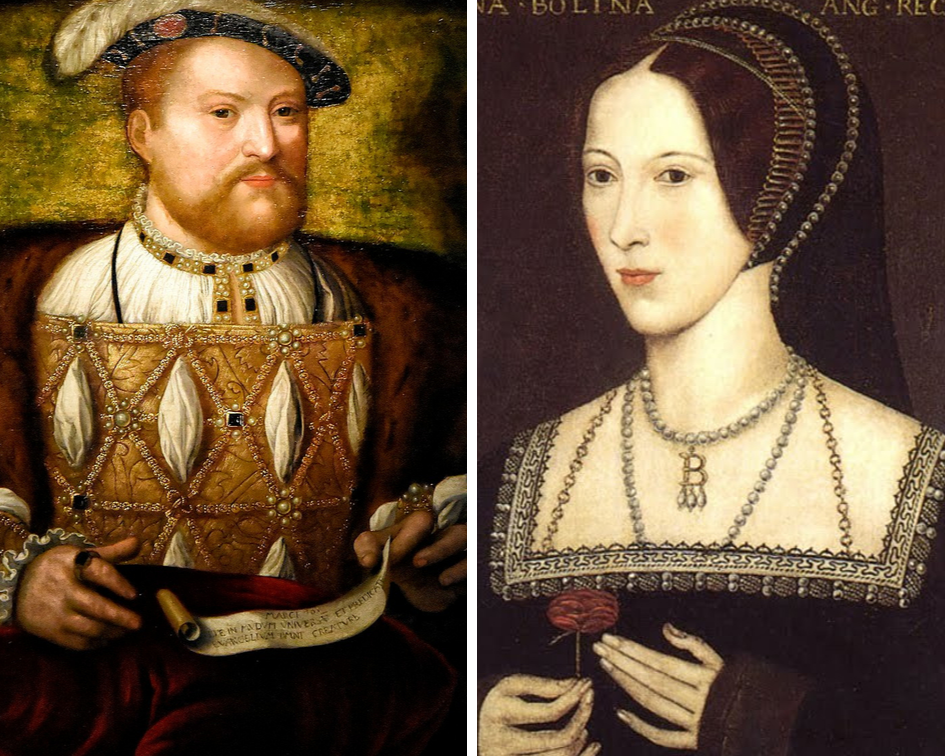
Ever since I started researching Calais for In the Footsteps of Anne Boleyn, I have been mesmerised by this ancient, lost town. I remember poring excitedly over old town plans; sketches of the city’s skyline; descriptions of the main streets and prominent buildings, as I pieced together how Calais looked during its Tudor hey-day. I walked the streets in my imagination. Sights, sounds and textures filled my mind. Eventually, it was easy to visualise the royal procession as it wound its way from the port through the city’s narrow streets and open squares, heading toward the royal lodgings, which had been made ready at the Exchequer.
To celebrate the anniversary of the historic 1532 visit to Calais, which took place in late October and November of that year, I am posting an adapted excerpt from In the Footsteps of Anne Boleyn, in which we go in search of Tudor Calais. This is just one entry, in over seventy, in a book which tells the story of Anne’s life through the places she visited and called home. If you wish to purchase your signed copy, read on to the end.
Calais: The Tudor Gateway to Continental Europe
Dover to Calais was, and still is, the shortest crossing point for ships traversing the English Channel. During the sixteenth century, Calais was part garrison, part trading town; the last outpost of English soil before reaching the rest of the continent and beyond. Within its fortified walls, there was a grid-like network of narrow streets, packed tightly with fine medieval houses owned by affluent Calais merchants. Every so often, these streets would open up into spacious squares used for trading, recreation and the gathering of its townsfolk. A plan of the town, taken from The History of the King’s Works, Volume III, is shown below:

We can only assume that it was when travelling to take up her position as maid-of-honour to the Regent, Margaret of Austria, in 1513, that the twelve-year-old Anne first came to Calais. Perhaps she also greeted the arrival of Mary Tudor on her way to be wed to the ageing King Louis XII at nearby Abbeville. Unfortunately, we have no record of exactly where and when Anne joined the English contingent serving the new French queen. However, she most definitely would pass through the town again on her way back from France in the winter of 1521; no doubt a woman transformed by her social and religious education at the sophisticated French Court.
Sadly, nothing is recorded of Anne’s movements through the town during that time. Yet, the same cannot be said for her only other visit to Calais in the autumn of 1532. Anne would return in triumph at Henry’s side as the newly created Marquess of Pembroke; she was at the pinnacle of her power and influence over the king. The trip was planned as a great celebration, during which the French and English kings would reaffirm their pact of mutual support against Charles V. Anne was also to be formally received by the French monarch, Francis I, thereby effectively endorsing her position as Henry’s queen-in-waiting. It was a significant moment on the political stage of Europe for the thirty-one-year-old.
Tudor Calais – Rediscovering a Lost Town
Tragically, the bombing of Calais during WWII destroyed virtually every remnant of the town’s medieval grandeur. However, due to the efforts of English antiquaries in the nineteenth century, we do know something of the buildings that had survived over the previous 300 years. Combined with contemporary accounts of the town and its history, the modern-day time traveller can yet walk in Anne Boleyn’s footsteps and gain some satisfaction by seeing beyond its unexciting present-day façade, to recreate in their mind’s eye the sixteenth-century town.

Perhaps the best way to begin this virtual tour is to approach Calais as Anne must have done – by boat. A ferry leaving from Dover on a clear day will soon reveal the shores of France looming on the horizon. Imagine the excitement of the twelve-year-old Anne, setting out on a journey of incomparable adventure, or in eager anticipation of her triumphant return in 1532.
A view of the town as it was in the sixteenth century, taken from the Chronicle of Calais in the Reigns of Henry VII and Henry VIII, shows the skyline of Calais as Anne would have seen it approaching across the English Channel from Dover. The town was fortified by enormous city walls. Along its length, a series of towers provided a mixture of both accommodation and defence. The Lantern Gate, in the centre of the picture, was the principal gate of the town. Above the gateway, the following words were inscribed: ‘Then shalle the Frenchman Calais winne, when iron and leade lyke corke shall swimme’. Unfortunately, such unshakeable belief would not prevent Calais eventually falling into the hands of the French during the reign of Mary I.
Like all the gates of the city, the Lantern Gate was locked during an elaborate ceremony every night. Referring to the image above, inside the city walls, follow the long-lost outline of four key buildings which made up the town’s impressive skyline; the churches of Our Lady to the left and St Nicholas to the right, whilst the exquisite medieval structures of the Town Hall and Staple Hall (not to be confused with the Staple Inn, the scene of Anne’s presentation to Francis I at a grand masque on 27 October 1532) stand centrally, directly to the south of the Lantern Gate.
If you dock at Calais today, you will see the gnarled remnants of the old Rysbank Tower over to your right. The ruins of the fortifications are still signposted from within the town itself. Modern-day ferries moor to the east of the town centre. However, if you had been travelling aboard the Swallow with Anne in 1532, your ship would have taken you past the Rysbank Tower to dock against one of Calais’ many quays and jetties, lying directly in front of the old city walls. The image below illustrates this well:
The now-vanished Lantern Gate, whose position is as described above and shown on the street map of Tudor Calais, was the main entrance to the town via Lantern Street, which today is called the Rue de la Mer. This ancient highway opened out into the central Market Place, whose footprint survives today in the form of the Place D’Armes. Only two ancient buildings remain to be seen today in Calais. The first of these is on the south side of the Place D’Armes; the Tour de Guet is a rare survivor from the Middle Ages, once standing behind the medieval, thirteenth century Town Hall that was destroyed during WWII.
On arriving here, the royal party would have turned right and headed down what was once called the High Street, the then main road heading east-west through the town. This is now called the Rue d’André Gerschel. Henry and Anne made their way towards the now lost church of St Nicholas, where a service of thanksgiving was held for their safe passage across the Channel. Thence, they went on to their lodgings at the Exchequer, situated directly opposite the church.
Here Anne was lodged in a suite of seven rooms, in the splendour that befitted a queen. Sadly, both the Church of St Nicholas and the Exchequer are long lost. The two buildings were situated in the western quarter of the old town and their precise location is difficult to fathom. However, they were oriented facing each other, perhaps somewhere close to where the Rue André Gershel intersects the Rue de la Victoire.

The next notable Calais landmark and one that played a central role in the festivities of the 1532 visit, was located at the intersection of the modern-day Rue Royale and the Rue de Duc de Guise. It is difficult to believe it today, but at this point once stood the most magnificent residence in Calais – the Staple Inn.
Like many of the grand buildings of Calais, its architecture combined Tudor and Flemish styles and was the residence for Henry VIII in 1520, when he travelled to the Field of the Cloth of Gold, as well as for Francis I in 1532. It was indeed here, in the sumptuous rooms of the palace, that Anne made her grand debut before Francis during that very same visit. Along with six of her ladies, she danced for him, and the French and English courts, at a masque held at the Staple Inn on Sunday 27 October.
The Chronicler, Edward Hall, provides us with a wonderful account of the royal visit, including how the Staple Inn was sumptuously decorated to receive the French king. He describes it being ‘hanged with so rich verdore, as hath not been seen, the ground of it was gold and damaske, and all ouer the tuftes and flowers, were of Satten, Silke and Siluer, so curiously wrought that they seined to growe, euery chamber was richer, and other: the second chamber all of Tissue, with a clothe of estate of nedle worke, set with great Roses of large pearle. The third was hanged with Veluet, vpon veluet pirled grene and Crimosyn, and embraudered ouer with braunches, of flowers of Gold Bullion, and garnished with armes and beastes of thesame gold, set with pearle and stone.’
If you turn out of the Rue Royale and into the Rue de Duc de Guise, you will soon come across Rue Marie Tudor on your right; across the entrance to this street once stood the original gateway to the Staple Inn. Fortunately, it was captured in an old photograph, taken around the turn of the twentieth century.

The only other survivor from Tudor Calais is the church of Notre Dame, or ‘Our Lady’, as it was known in Anne’s time. It was also called the ‘Chruch of Sainte Marie’. Edward Hall recounts how both Henry VIII and Francis I rode to the church every day to hear Mass together.
You can reach it by walking right the way along the Rue de Duc de Guise, until you join the Rue de Seigneur de Gourdan. It is worth a visit; just knowing that many kings and queens of France and England have prayed here in centuries gone by. Also, of particular note to the Tudor enthusiast, is the sixteenth-century tomb of John Bourchier, 2nd Baron Berners, who is buried in the church choir. Baron Berners was the Lieutenant of Calais until he died in 1533. So, it was Lord Berners who would have greeted the king and Anne Boleyn as they stepped off the Swallow.
Did Henry VIII and Anne Boleyn Consummate Their Relationship?
King Henry VIII and Anne Boleyn set out for Calais, from Dover, aboard The Swallow at 5 o’clock in the morning on 11 October. Happily, on their outward journey, the wind was in their favour and they landed safely at Calais just five hours later at 10 o’clock. In all, the couple spent a little over a month in the town. During that time, Henry left Calais on 21 October to meet with his royal ‘brother’, Francis I. Henry was lodged at the expense of the French King, in nearby Boulogne, for six days, returning to Calais on 27 October. Meanwhile, Anne was lodged magnificently at the Exchequer. This was a grand building that encompassed two privy gardens, enclosed within two central courtyards, a tennis play and a delightful long gallery.

After the official royal visit was over, fierce storms broke out in the region. Some of the English court had already set sail to return; many ships were blown off course and some were shipwrecked. However, with decreased numbers of courtiers present, Henry and Anne remained lodged at the Exchequer with perhaps a greater degree of privacy than was usual. Professor Eric Ives describes it as a sort of ‘honeymoon’ for the couple. The trip had certainly been an outstanding success. Assured of Francis’ support, was it at the Exchequer that Anne finally surrendered herself and slept with Henry for the first time?

https://commons.wikimedia.org/wiki/User:Chensiyuan
Eventually, Henry and Anne Boleyn boarded their ship to return to England at midnight on 13 November. After what must have been a rough twenty-eight-hour crossing, the couple and their entourage arrived back in Dover at 5 o’clock on the following day, St Erkenwald’s Day, 14 November. Henry and Anne then remained at Dover for two days, leaving on 16 November.
Hall has suggested that it was in fact on St Erkenwald’s day that the couple were married. While most historians agree that the true date that Henry and Anne were married was 25 January 1533, some have postulated that perhaps, having consummated their relationship sometime during their time confined in the Exchequer in Calais, the two were finally betrothed after they arrived in England. Since they had already consummated the relationship, this ceremony would have effectively made them man and wife. If this did indeed happen, Dover saw the first day of Anne as Henry’s de facto wife and queen of England.

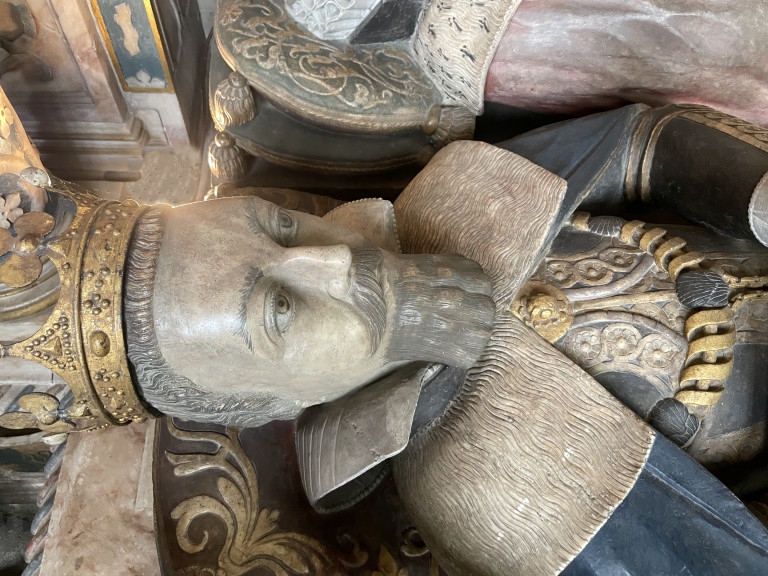
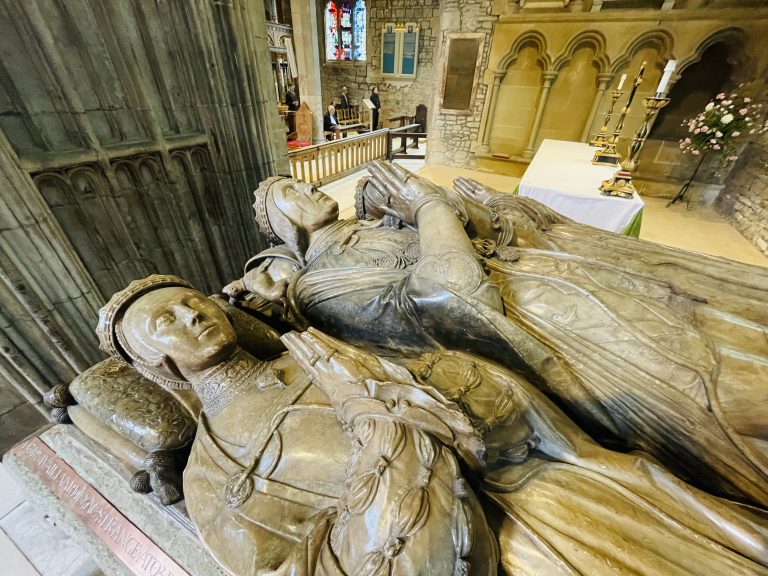
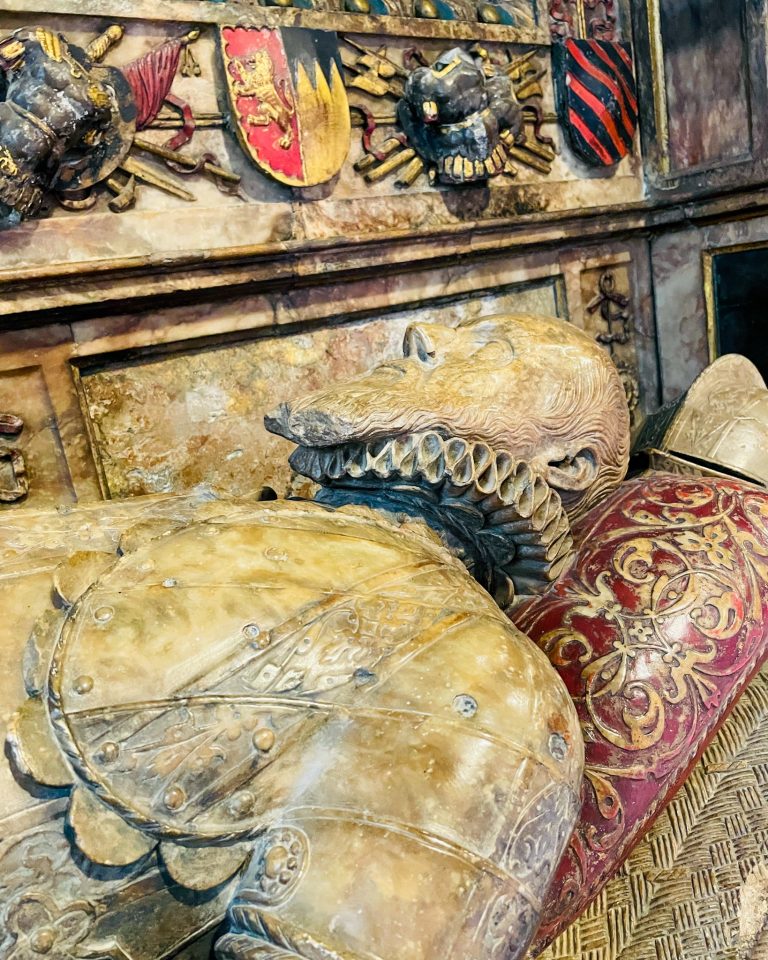
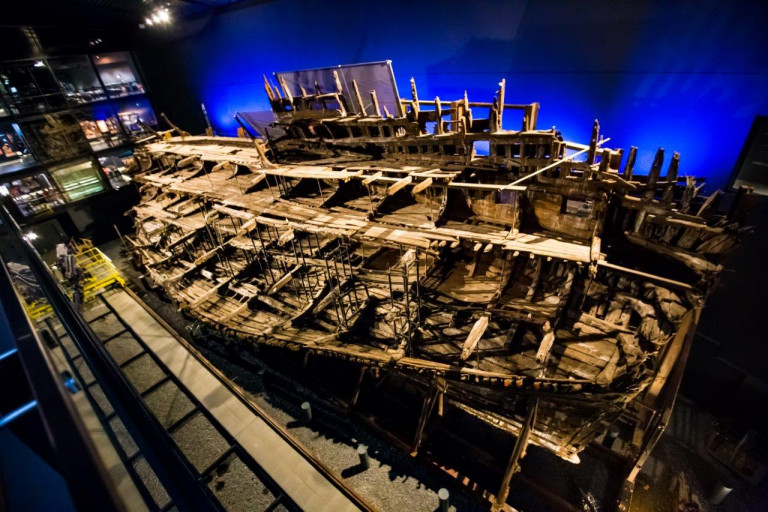
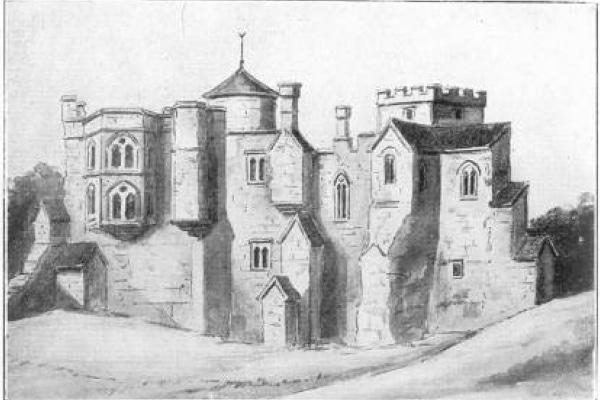
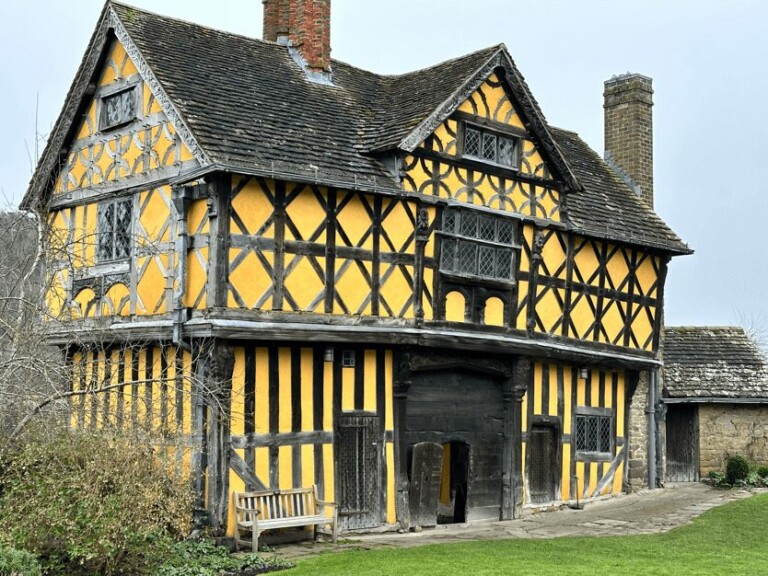
6 Comments